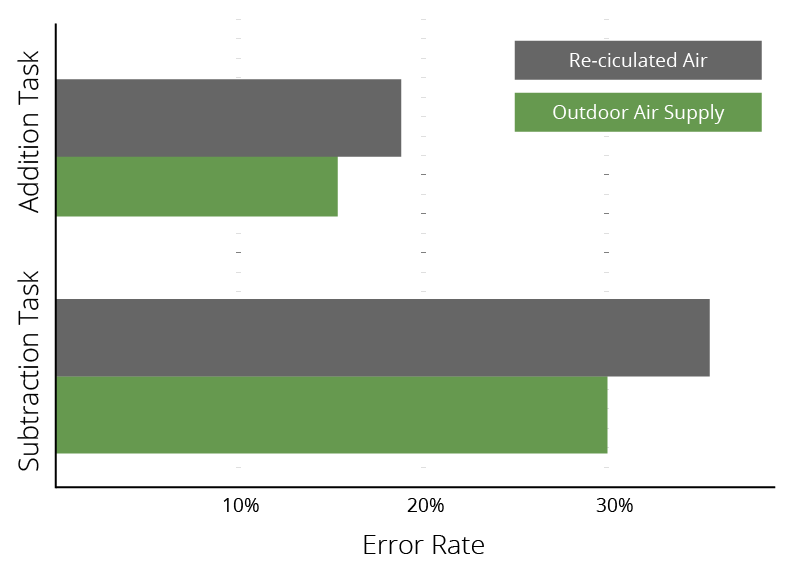Comfortable and green schools improve student performance and absenteeism in Canadian K-12 schools
School facilities staff are experts in working behind the scenes – or more appropriately, outside of classrooms. Even though facilities staff are not in the spotlight, their job is just as important for student success.
When schools are operational, comfortable and clean, teachers and students can focus on teaching and learning. Facilities staff have a direct influence on the performance, absenteeism and achievements of students in the buildings they care for and manage. Here are five ways that facilities staff in K-12 schools can improve student success.
Physical state of a building is a factor in academic performance
The same students with the same teachers would have different performance results in different buildings. Facilities that are designed for learning demonstrate improved student success, and green facilities are a natural step to reduce ongoing costs while incorporating considerations for effective learning.
A case study from 1999 explored the impacts of the educational setting on students’ performance, attitude and behaviour in the classroom. Researchers evaluated the test scores for district-wide tests for Grades 3 and 6 students, and these results were analyzed along with the condition of the school facilities. Schools that were newer or more recently renovated demonstrated improved test scores. The case study identified physical attributes of a school building as a factor that contributes to student performance.
Although upgrades and renovations can contribute to improve student performance, the researchers noted that the process to update a facility can cause a disruption to the school’s routines and physical interruptions to learning. Any major renovations should be timed when students are not learning to prevent the distractions.
Improved indoor air quality reduces sicknesses
Facilities with poor air quality or ventilation tend to have higher cases of student sickness and illness. When students are sick, they miss school or lack focus and attention.
The Environmental Protection Agency in the United States reviewed the academic literature related to student absenteeism and indoor air quality. Potential impacts to absenteeism can come from respiratory health effects that are associated with:
- Allergens or pollutants
- Dampness or mold
- Combustion byproducts including nitrogen dioxide
- Chemicals (such as from cleaning products), formaldehyde, moisture or dirt in HVAC systems
- Low ventilation rates
Common health effects from lower air quality include infections and asthma. Poor ventilation can also increase the transmission of infectious agents – a concern that is important during cold and flu season.
In addition to ensuring ventilation is adequate, regular cleaning and maintenance of HVAC systems reduces the spread of unwanted airborne particles. From there, cleaning and disinfection of surfaces can contribute to controlling the transmission of infectious agents and airborne particles.

Average error rates on math tests in classrooms with different air ventilation (from Ventilation Rates in Schools and Learning Performance, 2007)
Daylighting contributes to reduced absenteeism and sick days
Natural daylighting has the potential to improve student performance by reducing absenteeism and sick days. Researchers from California reviewed standard performance tests for students and compared the results to the amount of natural light in the students’ classrooms. After reviewing over 21,000 students from California, Washington and Colorado, the researchers concluded that the presence and type of daylighting has a strong correlation to the students’ performance.
The researchers provided four mechanisms that can contribute to the observed benefits of daylighting:
- Improved vision from better illumination, colour rendition, spectral content, 3D modeling and a reduction of flickers from electric lighting
- Improved morale from mental stimulation, alertness and a calming effect
- Improved memory retention
- Improved health from a circadian biochemical response to daylight
Adding or adjusting windows to improve daylighting tends to be a large capital project, so it is a consideration to include in new projects or major renovations.
Improve focus by managing noise
Unnecessary sounds can create interruptions. Managing excess or unwanted sounds (particularly sounds that cross into classrooms from hallways or other rooms) improves the learning atmosphere.
Sources of noise in schools was identified by researchers from Newcastle University in the United Kingdom in 2010. Noise leaks from other classrooms or from hallways is an issue of design and construction. Sound insulation can be added to existing facilities, but the optimal time to improve insulation is during construction and upgrades. Background noises from HVAC systems or other machinery can be mitigated with quieter models. Outdoor noises can typically be mitigated by closing windows, but that reduces direct outdoor air ventilation. Overall noise can be mitigated by amplifying teachers’ voices, whether by simply talking louder or using amplification equipment.
The researchers noted that managing noise can be in opposition with managing student comfort and air ventilation. For example, carpet can reduce acoustic interruptions but can impact air quality. In these scenarios, the need for hygiene, comfort or air quality often outweigh the need for acoustic controls.
The best time to consider noise is during design and construction of new buildings or upgrades, but this is not always possible. Noise management on a case-by-case basis can identify solutions suitable for the facility while maintaining air quality and hygiene.
Happy and healthy teachers improve student success
Improving the comfort, lighting, air quality and ventilation of classrooms reduces distractions within the classroom. And less interruptions makes it easier for teachers to do their job.
A 2011 review of Toronto schools concluded that occupants are typically more satisfied and comfortable in green schools compared to conventional buildings. Green buildings have better ventilation, air quality and lighting as well as more consistent air temperature. These physical components are associated with improved student performance and reduced absenteeism.
In addition to students’ satisfaction, teachers were also observed to have higher rates of satisfaction in green buildings. The magnitude of improvement in teachers’ satisfaction was not large, so the researchers acknowledged that building or retrofitting a green school should not be done just for the teachers. It’s an additional benefit of green facilities.

Absenteeism of staff, teachers and students in Toronto schools (from Absenteeism, Performance and Occupant Satisfaction with the Indoor Environment of Green Toronto Schools, 2011)
And of course, green schools use less energy
Reducing utility costs can open up funds for projects directly related to student success. Along with ensuring facilities are comfortable and functional, improving energy efficiency is the foundation of Rede’s work with Canadian K-12 schools. Together with facilities staff, we help teachers and students focus on what is important: education.
